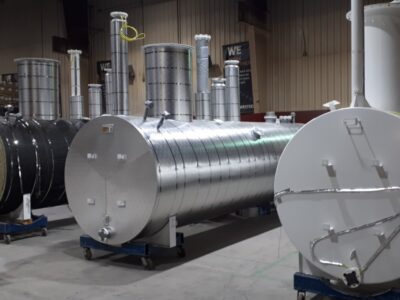Introduction
You may have wondered how that big tree in the backyard or those on the street are standing firm through the change of seasons and revive back to life during spring after the onslaught of the harsh winter. Homeowners need to take care of their trees before the winter season or search for “tree service near me” and hire professionals to do the job. However, trees are also strong enough to take care of themselves and prepare themselves in numerous ways to survive the snow. Let’s explore those defense mechanisms:
The Details
- The tree’s bark – A tree’s bark is the first line of defense against everything from pests and disease to storms and the cold winter season. The outer bark has varieties density and thicknesses to create several air pockets and spaces inside the tree. Similar to woolen clothes or insulation for your home, these air spaces act as a layer of insulation that prevents the tree from freezing to ambient temperatures.
- Abscission or losing leaves – The leaves on a tree are responsible for photosynthesis. During this process, it uses the sunlight and combines water and carbon dioxide to create sugar or energy for the tree. The leaves also have stomata or tiny openings that regulate transpiration and allow oxygen and water vapor to escape the leaves as a byproduct of photosynthesis or for temperature control of the tree.
However, during the cold season, the ground freezes up and roots have very limited access to water. Moreover, due to limited sunlight, the leaves can’t produce food properly. That’s why trees in cold climates shed their leaves to prevent wasting water through transpiration.
- Leaf adaptations – While deciduous trees shed their leaves during the cold season, it’s not the same for coniferous trees. Instead, they have different types of leaf adaptations to survive the winter.
These trees have adapted their leaves into long and thin needles. Unlike leaves that are optimized to get exposed to as much sunlight as possible, these needles keep exposure to a minimum. They make up for that low sunlight exposure with denser and more numerous needle-like leaves.
Since these needle-like structures have a less exposed surface area, they have fewer stomata to lose water. They also allow snow to slide down instead of collecting it and weighing on the branches. Moreover, coniferous trees have stomata deep within the needle. That creates still air inside the needle and results in a reduced rate of transpiration.
The needles also have waxy and thick cuticles. This is the outermost part of a leaf, and the wax helps to minimize water loss similar to a wax paper that prevents food from losing moisture.
- Change in metabolism – Since the autumn season, trees start changing their metabolism at a cellular level so that they can reach a level of dormancy. Something similar to reptiles, and certain mammals. They start early by storing food in their stem and roots to last them through the winter and while shedding leaves they reduce their photosynthetic ability and need for a high amount of nutrients.
Apart from lowering metabolism they also start increasing their cold tolerance and by mid-winter, they are fully adapted to tolerate the harsh season and live through it.
- Cellular level modifications to deal with ice – Under the bark, there are plenty of tissues that move sugar, water, and other nutrients to and from the roots and the rest of the tree. This mixture of nutrient and sugar-rich liquid is known as sap.
If the water moving up and down these tissues freeze during the winter, they may inflict cellular damage with the expanding ice shards. That’s why the tree regulates where ice can form inside it. The tree creates proteins that act as ice nucleators and the ice forms around it.
The tree sends these proteins in between cells to form ice, draw out water and increase sugar concentration in the sap. The sugar concentration reaches a certain point where the sap’s freezing point is lower than the ambient temperature. The tree now has excess sugar reserves to lie through the winter and also ensures that its cells don’t get damaged due to freezing.
- Antifreeze – Apart from ice-nucleating proteins, the tree also creates its antifreeze proteins. Just like the antifreeze for your car, the tree’s antifreeze proteins lower the freezing point of water to prevent ice damage.
Things you can do to protect your tree during the winter:
- Tree guards – Food is in short supply during the winter. Critters, deer, and rodents would munch on anything to prevent from starving. Apart from leaves and flower buds on plants, they will also eat twigs, buds, and bark and injure the tree.
You can prevent animals from getting close to the tree by installing a tree guard around it. Plastic or wire mesh tree guards are inexpensive and can be reused during the next winter. You can also have feeding holes in your yard or garden with nuts, grass, and other food that will help feed the animals. This also helps you invite wildlife to your property and add more color to the dull surroundings.
- Mulch – Mulching is very important during the winter season. Spread a layer of mulch around the base of the tree. The mulch may be composed of dead leaves, wood chips, or other types of organic matter.
Make sure that you don’t block the base of the tree and leave a bit of room to form the mulch perimeter. Apart from that, you also need to keep the mulch layer thick. At least eight centimeters to keep the ground and roots from freezing. You can also add a fresh layer of compost at the lowest level of the mulch so that the roots can stay healthy.
Conclusion
Now that you know about the defense mechanisms a tree uses to protect itself from winter, you can be at ease when the cold hits. Apart from that, you can also take some above-mentioned measures to protect your tree or search for “tree service near me” and outsource those tasks to pros.



















Comments